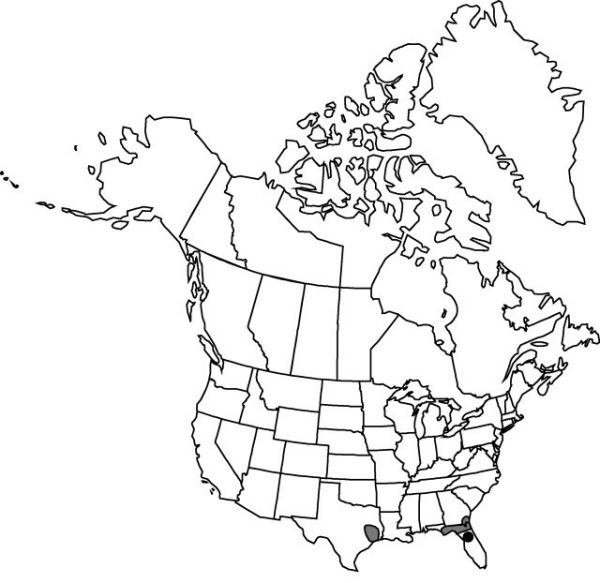Platanthera chapmanii
Native Orchids Florida, 151. 1972.
Plants 30–77 cm. Leaves 1–3, spreading to ascending, abruptly or gradually reduced to bracts distally; blade linearlanceolate or lanceolate to lance-oblong, 15–26 × 1–3 cm. Spikes rather dense. Flowers resupinate, showy, orange to pale dull yellow; dorsal sepal entire or emarginate; lateral sepals reflexed; petals linear to obovate, apically fringed to merely lacerate-dentate; lip porrect, ovate to ovate-orbiculate, without basal thickening, 5–10 × 4–9 mm, margins deeply filiform-fringed; spur slenderly cylindric, 8–17 mm; rostellum lobes directed downward, distally retrorse, digitate; pollinaria with stalks recurved; pollinia remaining enclosed in anther sacs; viscidia orbiculate to suborbiculate; ovary slender, 10–19 mm.
Phenology: Flowering Jul–Aug.
Habitat: Wet to dry flatwoods, pine barrens, savannas
Elevation: 0–375 m
Distribution

Fla., Ga., Tex.
Discussion
as hybrid
The retrorse rostellum lobes of Platanthera chapmanii usually separate small-flowered plants of this species from P. cristata, which normally presents the viscidia forward on only slightly curved lobes. Additionally, the nearly circular mouth of the spur of P. chapmanii is in contrast to the triangular opening of P. cristata. Until recently P. chapmanii was confused with the hybrid of P. ciliaris and P. cristata, P. ×channellii Folsom, which is readily recognized by its angular rostellum lobes that are directed forward and outward, presenting the viscidia forward, as in its parents (J. P. Folsom 1984).
Selected References
None.